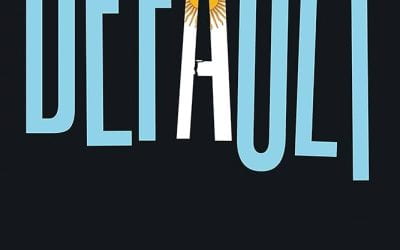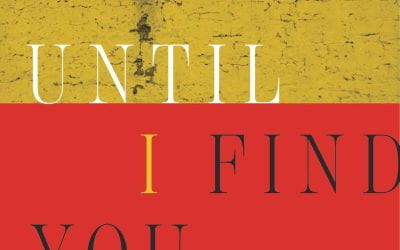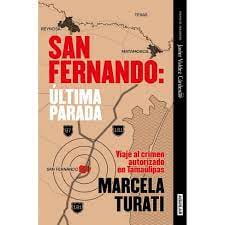A Review of Ghosts of Sheridan Circle
Echoes of an Assassination in Washington, DC
Ghosts of Sheridan Circle: How a Washington Assassination Brought Pinochet’s Terror State to Justice By Alan McPherson (Chapel Hill: The University of North Carolina Press, 2019)
Targeted killing of political enemies—assassinations—is thankfully rare in the United States. The most famous such assassination occurred in Washington, DC. And it was committed by a close ally of the United States.
In September 1976, Chile’s Pinochet dictatorship sent agents to Washington, DC, to kill Orlando Letelier, a prominent exile leader and Chile’s former ambassador to the United States. The car-bomb exploded in Sheridan Circle, only a few miles from the White House, killing Letelier and a young American colleague, Ronni Moffitt. She and her husband, Michael, were catching a ride to work with him.
An elegant and effective advocate seeking to muster U.S. opposition to Chile’s dictator, General Augusto Pinochet, Letelier moved easily in Washington power circles. He had had a friendly lunch with Henry Kissinger only a few months before his death. The rush-hour explosion on that rainy fall day on an avenue lined with embassies was a profound shock to Washingtonians. It is not uncommon for someone to describe where they were that day when they heard the bomb or learned about it. For the thousands of exiles living in the United States, Europe and elsewhere, it was a shock of fear. Former DRCLAS Visiting Scholar Alan McPherson, in a new book Ghosts of Sheridan Circle: How a Washington Assassination Brought Pinochet’s Terror State to Justice, traces those shockwaves inside the U.S. and Chilean governments in personal lives and legal investigations lasting into the current decade.
Cross-border assassination, of course, in which one government seeks out and kills its political adversaries living in exile in another country, continues to be practiced. Saudi Arabia’s killing of dissident journalist Jamal Khashoggi in Turkey in 2018 and Russia’s numerous international victims are only the most shocking recent reminders.
In the heart of the Cold War, such killings were rampant in South America; hundreds of political exiles were killed in the late 1970s by rightist dictatorships working together inside each other’s countries in a secret alliance called Operation Condor. Chile used the alliance to prepare the Lertelier killing, a crime that remains the first and only time an allied foreign government carried out a terrorist assassination in the United States.
Yet the 1976 murder should not have happened. The assassination was a tragedy of errors whose international consequences echo to this day, particularly regarding the history of cooperation between the dictator who ordered the assassination and the government of the country where it was committed.
Pinochet had come to power in a military coup with the strong encouragement of President Richard Nixon and his national security adviser Henry Kissinger. The intimacy of those ties and their shared anticommunism may have led Pinochet to assume his U.S. allies would wink at the killing of an adversary who was a known leftist. Letelier had served in the deposed government of Marxist president Salvador Allende, whose revolutionary but democratic regime the United States feared would become a model for the rest of Latin America and strengthen Soviet and Cuban influence. Kissinger and the CIA were fully aware of Pinochet’s rampant abuses of human rights. Moreover, the CIA had reported to Kissinger that Chile and other dictatorships in Operation Condor were planning to assassinate top exile leaders outside Latin America. But no action was taken. The intelligence pointed to Europe, and U.S. intelligence concluded Chile would not dare or was not capable of conducting such operations in the capital of its principal ally.
Both were wrong. Chile’s notorious security service, DINA, was more than willing and entirely capable of organizing the killing, using a U.S. citizen and anti-Castro Cubans as the hitmen.
And Chile badly miscalculated the U.S. reaction. Overcoming internal opposition and defying skepticism of Letelier’s colleagues on the left, the FBI and U.S. prosecutors assembled a team of more than a hundred agents and mounted a swift and effective international investigation that solved the case.
McPherson, a historian at Temple University, recounts the compelling story of the Letelier investigation and the subsequent trials in the United States and in Chile. The book’s most important contribution is its cataloguing of the judicial proceedings and the dogged efforts by Letelier’s family, especially his widow, Isabel Margarita Morel de Letelier and his sister and human rights lawyer Fabiola Letelier, to prosecute Pinochet himself. While the FBI’s evidence within two years had laid the murders at the feet of the Chilean government, and two secret police officers were eventually imprisoned, Pinochet eluded responsibility. He remained president until 1990 and head of the Chilean Army for eight years after that. Yet he was thoroughly discredited by the time of his death in 2006. Under indictment in connection with the Condor plots and other cases, he had become an international pariah for his systematic violation of human rights leading to the death and disappearance of more than 3,000 people.
The FBI’s Letelier investigation was the first crack in the dictator’s armor, the first penetration of the dictatorship’s secret apparatus of terror. The evidence it developed, together with tens of thousands of pages of declassified U.S. intelligence documents, was to be used to launch prosecutions against hundreds of military officers in Chile and other countries once ruled by dictators. Without that evidence, to paraphrase the book’s subtitle, it is hard to fathom that the Pinochet’s terror state would have been so thoroughly exposed and a measure of justice obtained.
While the second half of the book provides a new and thorough account of the court battles in Chile, the early chapters on the assassination itself and the FBI probe do not provide new factual material or insights. For the most part the author relies on newspaper clips and previous books from the 1980s on the Letelier case, notably Assassination on Embassy Row, my book with Saul Landau, and Labyrinth by chief prosecutor Eugene Propper and Taylor Branch. (Those writers’ works are cited more than 150 times.) It is somewhat perplexing to notice that whole scenes, including quoted dialogue, from those books are reproduced virtually intact in Ghosts. While the source is identified in footnotes, the impression is left that the text and quotations are from the author’s own interviews.
Likewise newspaper accounts are used to provide detail of many of the investigative and judicial episodes even when primary sources such as full transcripts and declassified documents were available. The result, inevitably, is that little new ground is plowed beyond that which had already been published. The book does not address the lingering questions about U.S. knowledge of the Condor assassination plans, for example.
With that methodological caveat in mind, the reader will find the book smoothly written, comprehensive in its coverage of all relevant events and factually accurate. I would disagree with only one significant assertion by the author, namely that Nazism and Fascism were important influences in the life and career of Pinochet-era military officers. DINA chief Manuel Contreras, for example is called the “Himmler of the Andes.” It does not minimize Contreras’s horrific crimes to find such labelling exaggerated. There is scant evidence of a direct Nazi connection in Pinochet ‘s military, although he was known to be an admirer of the Spanish Fascist dictator General Francisco Franco. More to the point, there is very solid documentary evidence of the influence of U.S. national security doctrine as well as heavy doses of old-fashioned rightwing anti-Communism in the genesis of the Chilean dictatorship.
McPherson’s book reminds us that the legacy of military violence remains an open wound in Latin America. The 1970s dictatorships have created an unavoidably tense backdrop to the uncertain democracies that succeeded them. The Letelier saga is an American, not just a Latin American story, which forces the spotlight on the role of the United States and the intimacy of its secret interactions with a government that brought international terrorism to the streets of Washington. The effectiveness of the courageous FBI investigators is a credit to the tradition of independent, nonpolitical law enforcement. But it does not obscure the fact that no serious human rights investigation has ever been launched in this country to establish an honest reckoning of U.S. responsibility in the crimes of the military regimes.
Fall/Winter 2019-2020, Volume XIX, Number 2
John Dinges is a professor of journalism emeritus of Columbia University and the author of three books on Latin American dictatorships, most recentlyThe Condor Years: How Pinochet and his Allies Brought Terrorism to Three Continents(The New Press 2004) He was a correspondent in Chile during the first five years of the Pinochet government. He is currently writing a new and greatly expanded version of that book, Inside Operation Condor, based on recently declassified CIA and FBI documents, which will appear in 2021.
Related Articles
A Review of Default: The Landmark Court Battle over Argentina’s $100 Billion Debt Restructuring
In February 2019, I found myself serving as the special attorney general for the then newly recognized interim government of Venezuela, tasked with addressing more than 50 claims before the U.S. courts stemming from the $140 billion debt inherited from Hugo Chávez and Nicolás Maduro.
A Review of Until I Find You: Disappeared Children and Coercive Adoptions in Guatemala
A student in my “Introduction to Cultural Anthropology” course at the University of Delaware approached me several weeks ago, after hearing about my long-term research in Guatemalan communities, to tell me that they were born there, in Guatemala.
A Review of San Fernando: Última Parada, Viaje al crimen autorizado en Tamaulipas
One of Mexico’s best investigative journalists, Marcela Turati, takes readers to terrorized and traumatized San Fernando, a town known for dozens of mass graves, and exposes the depths of criminal brutality and official corruption that hid the bodies and the truth for years.





